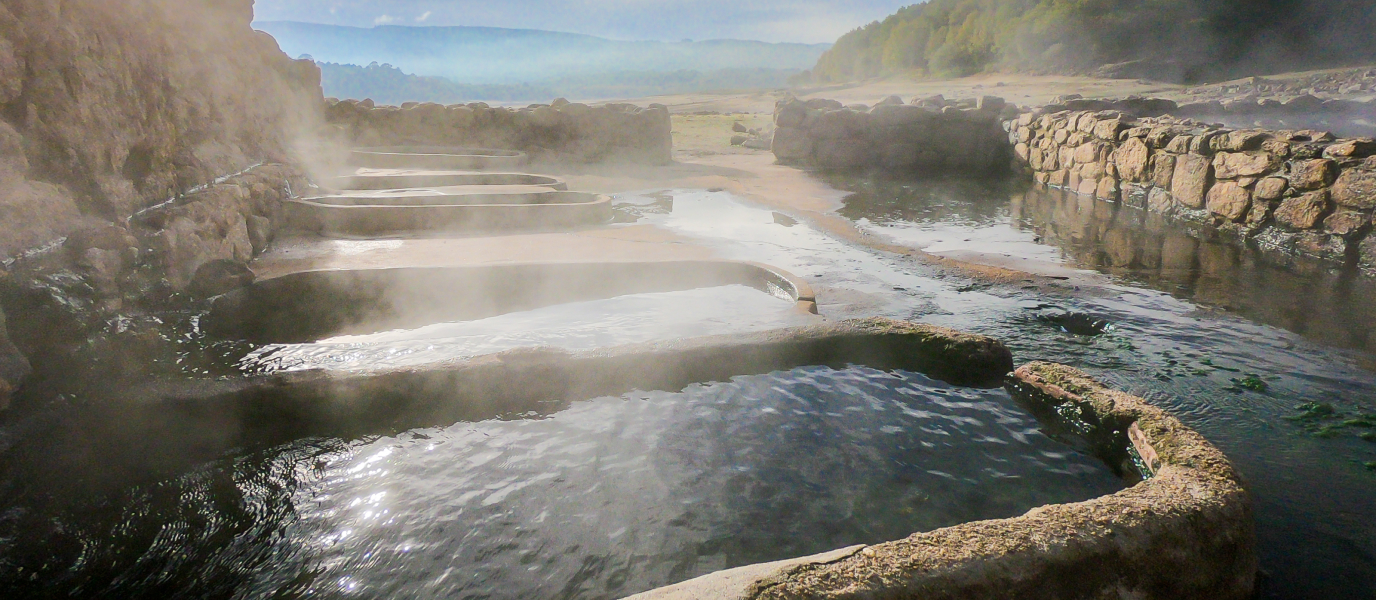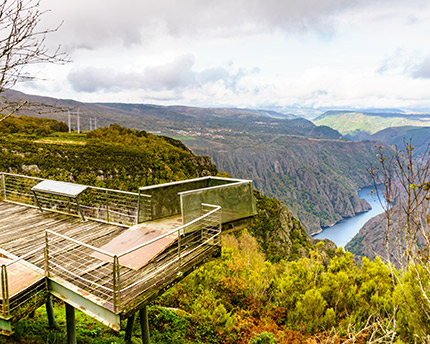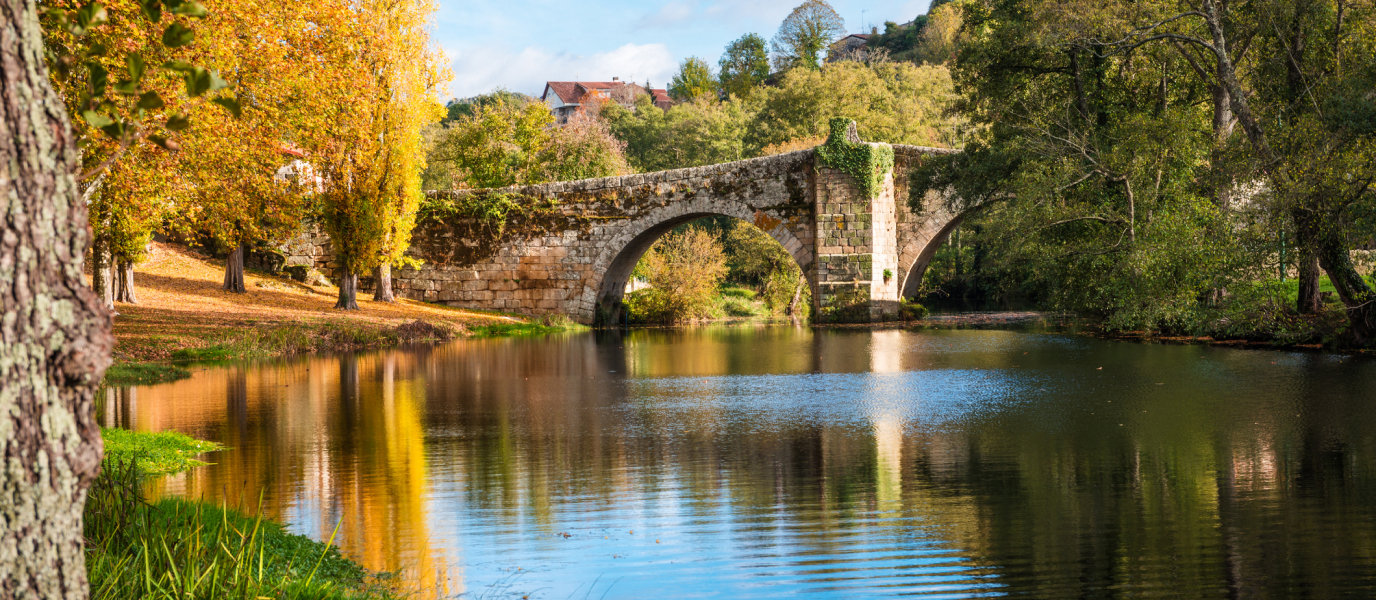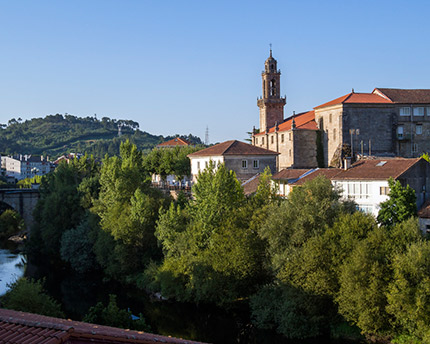In the very heart of Galicia, far from the coast, the Ourense province offers a huge range of enticing activities in which the rich history of Galicia and its privileged natural features come together. Picturesque villages, treasures from distant times and landscapes of outstanding natural beauty… all of this can be found within easy reach in this wonderful Galician province.
The capricious Ourense landscape —marked by mountains, valleys and rivers— makes this Galician province the perfect destination for a road trip in which you’ll want to leave the map at home. Simply follow the winding roads that weave their way through the stunning Galician countryside, experiencing everything that each charming village has to offer: from priceless historical gems to truly outstanding gastronomy.
OURENSE’S MOST BEAUTIFUL TOWNS AND VILLAGES
Ourense: the city of water…and history
The base of operations for any trip to the Ourense province is, of course, its city of the same name. The city of Ourense is the area’s inevitable reference point due to its enormous historical heritage, rich artistic and cultural legacy and unique natural features. Known as “the city of water”, Ourense is notable for its many thermal baths (which are found all around the city, many of which can be accessed for free), its unbreakable relationship with the River Miño and its magnificent surrounding landscapes. Moreover, discovering landmarks such as the Catedral de San Martiño [Cathedral of San Martiño], the Plaza Mayor, the Puente Romano [Roman Bridge, also known as the ‘Ponte Vella’, meaning ‘Old Bridge’], the Convento de San Francisco [Convent of San Francisco] and the Oca-Valladares ‘pazo’ manor house mean contemplating some of the most important historical buildings in Galicia.
Ourense is a monumental city just waiting to be explored. Its network of streets and squares offer endless possibilities, ranging from the finest gastronomy and wines of inland Galicia to a wide range of fascinating museums, fun popular festivities and good festivals and nightlife. Put simply, there are countless reasons that make Ourense a must-visit destination.
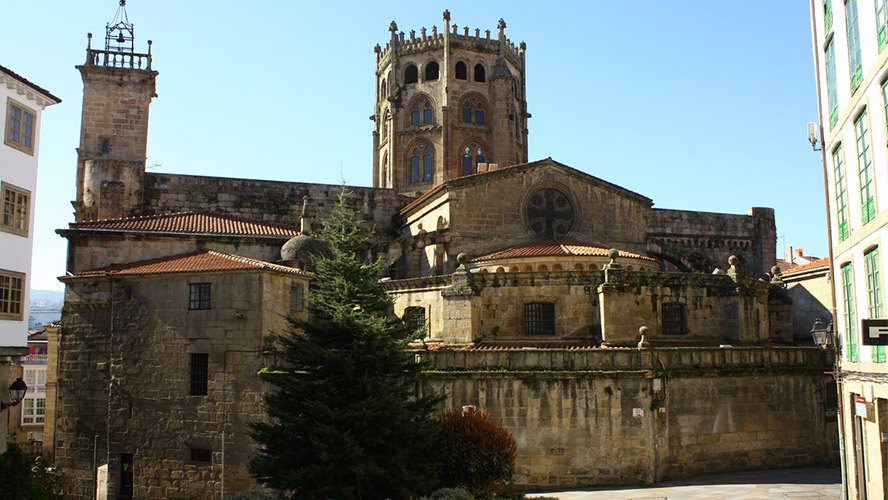
Allariz: a Historic-Artistic Site
Not far from the city of Ourense, this illustrious village on the banks of the River Arnoia —declared a Historic-Artistic Site in 1971— is a medieval jewel bursting with incredible stories and magical locations. In fact, the efforts to recover and safeguard its old quarter —which boasts attractions such as the churches of Santiago, San Pedro and Santo Estevo, the Plaza Mayor, A Paneira manor house, the Convento de Santa Clara [Convent of Santa Clara] and the Puente de Vilanova [Vilanova Bridge], among many others— were recognised with the European Urban and Regional Planning Award in 1994.
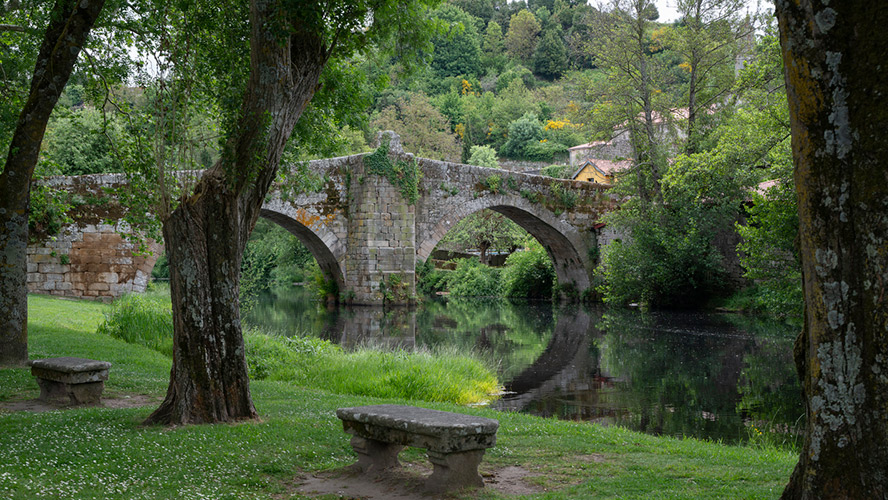
Historical heritage, museums, exhibition rooms, gardens, riverside walks, a diverse commercial and gastronomic offer— in which local, ecological and “km 0” products reign supreme—, cobbled streets and impressive manor houses bearing coats of arms…Allariz really has something for everyone. Its International Garden Festival, held on the right bank of the River Arnoia, is also well worth attending.
O Carballiño: the town of octopus…in the mountains
Located around 25 km from the city of Ourense, this inland Galician municipality surrounded by forests and mountains and penetrated by the Arenteiro River is famous worldwide for its most famous dish: octopus. That’s right, octopus. The ‘pulpeiras’ and ‘pulpeiros’ of O Carballiño make some of the best ‘pulpo á feira’ anywhere in Galicia. We also highly recommend attending the traditional “A Festa do Pulpo de O Carballiño” [‘O Carballiño Octopus Festival’, declared a Festival of National Tourist Interest] which has been held every second Sunday in August for more than 50 years.
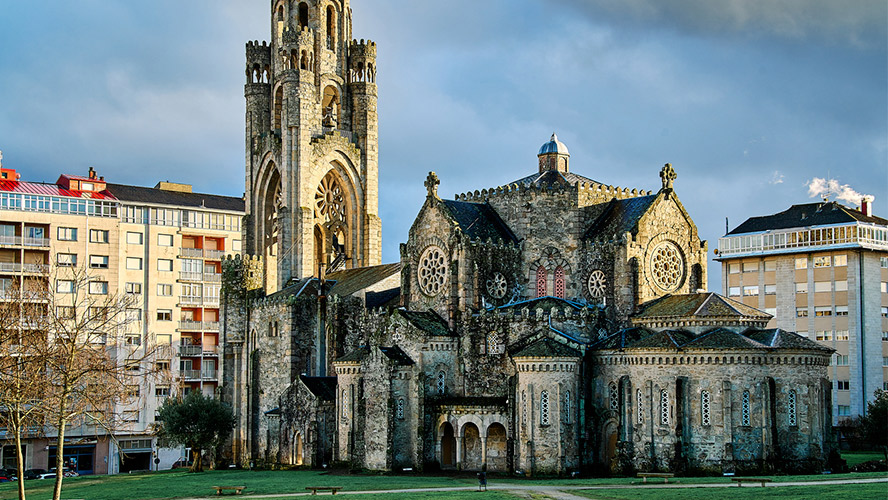
Besides its unbreakable relationship with Galicia’s favourite cephalopod, O Carballiño also boasts a rich historical and artistic heritage, notably the Iglesia de la Veracruz [Church of La Veracruz], the Iglesia de San Cibrán [Church of San Cibrán], the Casa do Concello [Town Hall] and the Playa Mayor. It also offers an exuberant natural landscape comprising thermal springs, the fluvial beaches of the River Arenteiro, the gardens of the Gran Balneario [Great Spa’] and the large Municipal Park —which spans more than 32 hectares and hosts the Octopus Festival— among other important green areas.
Ribadavia: the capital city of Ribeiro
Capital city of the ancient Kingdom of Galicia at the dawn of the second millennium and current capital of the O Ribeiro wine region, this extraordinary medieval village on the banks of the River Avia (hence its name) is one of the undisputed jewels of the Ourense province. It is no coincidence that its historic quarter has been declared an Asset of Cultural Interest.
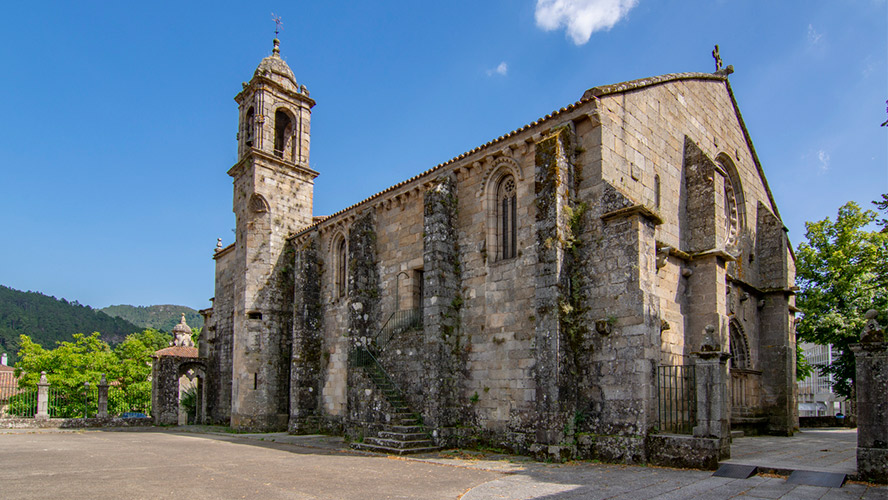
Celtic, Roman and Visigoth remains, the pre-Romanesque chapel of San Xes de Francelos, the Castillo de los Sarmiento [Los Sarmiento Castle], the ancient town walls, the church and convent of San Domingos and that of San Francisco are just some of the historical treasures that are intertwined with vineyards and wineries that are steeped in history. Furthermore, the Ribadavia Jewish quarter was one of the largest of its kind in medieval Spain and by far the most important in Galicia; even today, it holds one of the richest Sephardic legacies in the country. If you also take into account the extraordinary gastronomy and fascinating local festivities such as El Entroido [carnival] and the Festa da Istoria [History Festival], you’ll realise why this is such an attractive destination.
Parada de Sil: the heart of Ribeira Sacra
With a capricious geography divided by the spectacular River Sil canyon, this corner of the Ourense province stands out for its incredible natural features and important historical structures. In terms of its natural features, the imposing viewpoints over the river —such as the famous “Balcón de Madrid”— and the range of hiking routes allow you to discover a truly unique landscape. As far as historical heritage is concerned, the undisputed protagonists are the necropolis of San Vitor, with more than 40 tombs dug into the rock itself; and the Monasterio de Santa Cristina de Ribas de Sil [Monastery of Santa Cristina de Ribas de Sil], a Romanesque jewel of the Ribeira Sacra. However, there is much more to be discovered in the surrounding areas.
Wine tourism is another of the main attractions, with the various wineries and vineyards of the Ribeira Sacra DO (designation of origin)—many of them perched on the steep slopes of the River Sil canyon— offering a wide range of experiences. Further flavour can be found at the Chocolate House-Museum in Teimende, which is the only one of its kind in Galicia. It is housed in an old factory where, for almost a century, the Casares family produced different types of chocolate.
Castro Caldelas: between the river and the mountain
Located in the most mountainous area of the Tierra de Caldelas province, still within the area of influence of the Ribeira Sacra, this town is renowned for more than just its historic quarter that was declared a Historic-Artistic Site in 1998. It is also a natural paradise populated by conifers, oaks and chestnut trees. In other words, it marks a unique coming-together of history and nature; a meeting point of the waters of the Edo and the Sil; and a unique collection of extraordinary medieval treasures.
In terms of historical heritage, some of its main attractions include the monasteries of San Xoan de Camba and San Paio de Abeleda, both built during the 10th century; the Castillo de Los Condes de Lemos [Castle of Los Condes de Lemos], the most important medieval fortress in Ribeira Sacra; the Cima da Vila neighbourhood, with its white galleries and houses bearing coats of arms; and the sanctuary of Nuestra Señora de los Remedios, in the lower part of the village. The network of hiking routes that depart from the town centre open the door to the spectacular natural heritage of this corner of the Ourense province.
Verín: a town of water and wine
Leaving behind the picturesque landscapes of the Ribeira Sacra, it’s time to head southwards, almost towards the border with Portugal, to discover a fertile valley which is penetrated by the waters of the River Támega. Verín is renowned for its medicinal mineral waters (Sousas, Fontenova, Cabreiroá, Caldeliñas, Requeixo, etc.) and its wine production. It is the land of the Monterrei DO (designation of origin), which has produced high-quality wines since the Middle Ages that have managed to evolve to meet the demands of the 21st century.
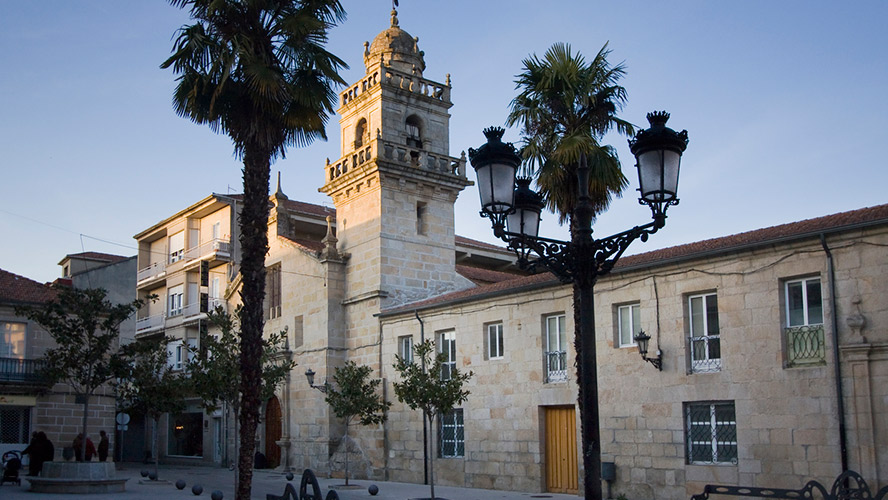
Another indisputable local landmark is the Castillo de Monterrei [Castle of Monterrei]: one of the best preserved fortresses in Galicia which has been declared an Asset of Cultural Interest in the ‘monument’ category. Like a great acropolis, it watches over the valley from the top of its hill. In terms of intangible heritage, the Entroido de Verín, with its famous “fariñada” flour battles and “cigarrones” (the name given to the outfit worn during the parades), is one of the most famous carnivals anywhere in Galicia.
HISTORIC LOCATIONS IN THE OURENSE PROVINCE
Castillo de Monterrei
Perched atop a hill overlooking the River Tamega valley and the town of Verín, this historic fortress-palace is one of the most remarkable medieval monuments in Galicia. Built in the 12th century by Alfonso Henríquez, the Castillo de Monterrei is a triple-walled enclosure that has served as a defensive bastion, a stately home and a pilgrim’s hospital, among other purposes. The Torre del Homenaje (15th century), the Torre de las Damas (13th-14th centuries), the Palacio de los Condes (15th-17th centuries), the Iglesia de Santa María de Gracia (13th century) and the watchtower (17th century) are some of the main architectural features of this unique Galician acropolis.
Iglesia de Santa Eufemia de Ambía
Located in a small parish between Allariz and Maceda, this tiny pre-Romanesque church (9th century) has been declared an Asset of Cultural Interest. However, its uniqueness goes far beyond this title. The peculiar Mozarabic influence that permeates its single nave with a rectangular apse, in which two double-horseshoe arches remain, makes this a very unusual construction for the period and place in which it was built. Inside, the Iglesia de Santa Eufemia de Ambía has two altars of Roman origin and a medieval-Romanesque carving of Jesus Christ on the cross, in addition to other unique decorative elements.
Monasterio de Oseira
The Monasterio de Santa María la Real de Oseira [Monastery of Santa María la Real de Oseira] —known as the Galician El Escorial— is one of the finest exemplars of the rich legacy of the Cistercian order in inland Galicia. A large rounded arch from the late 17th century presides over the entrance to this still-active religious community, heir to a tradition that dates back to when the monastery first became part of the Cistercian order in 1175. The Cloister of Los Caballeros, the Cloister of El Reglar or Los Medallones and the Cloister of Los Pináculos are all found within the monastery, which also contains other significant locations such as the Stone Museum, the Bishops’ Staircase, the old Chapter House and the splendid library, among many others. Furthermore, its Romanesque church, which dates back to the early 13th century but has a 17th century Herrerian façade, is considered one of the masterpieces of Cistercian architecture on the Iberian Peninsula.
Monasteries in Ribeira Sacra
The historical and artistic heritage found at the confluence of the rivers Miño, Sil and Cabe is simply overwhelming. Good examples of this are the monasteries of the Ribeira Sacra, such as the monastery of Santo Estevo de Ribas de Sil, the monastery of Santa Cristina de Ribas de Sil, the monastery of Santa María de Montederramo, the monastery of Santa María de Xunqueira de Espadanedo and the monastery of San Pedro de Rocas, among others. Multiple origins (some as early as the 6th century), contrasting styles (from Romanesque to Baroque), different dimensions, countless legends and a totally captivating environment characterise this unique collection of architectural jewels of the Ribeira Sacra.
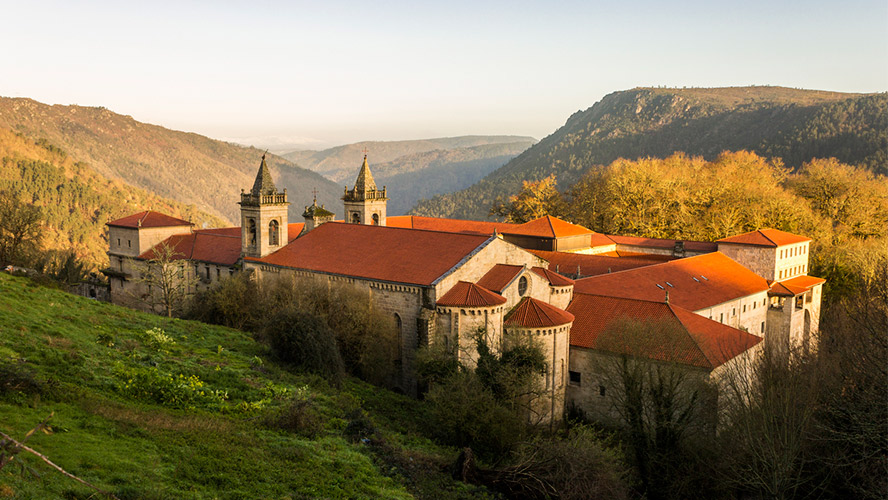
Ourense’s thermal baths
Since the Roman times, the “City of Water” has been famous for its thermal baths. In fact, Ourense is the European city with the second highest volume of thermal water, with baths found all across the city. This includes the baths in A Chavasqueira, which mark the beginning of the long Ruta Termal [Thermal Route] that runs for around 4 kilometres along the River Miño and which continues through O Tinteiro, Muiño da Veiga, Outariz, Burga de Canedo and the Fuente de Reza. There is also an open-air, free-to-access thermal bath in As Burgas spanning almost 200 m2, with water that emanates at more than 60º but which cools to around 38/40º. With more than 2,000 years of history, this bath is located in the heart of Ourense’s historic centre.
Claustro de San Francisco
A jewel of Galician Gothic architecture, this cloister without a church (“moved” to the Parque de San Lázaro) was founded in the 14th century in the upper part of Ourense and has managed to survive all kinds of transformations, including its conversion into infantry barracks in the mid-19th century. Fortunately, the 63 arches of the Claustro de San Francisco [Cloister of San Francisco], decorated with mythological beings and plant, animal and human motifs, all sculpted out of stone, remain standing to this day. This extraordinary structure has since been converted into an interesting cultural complex.
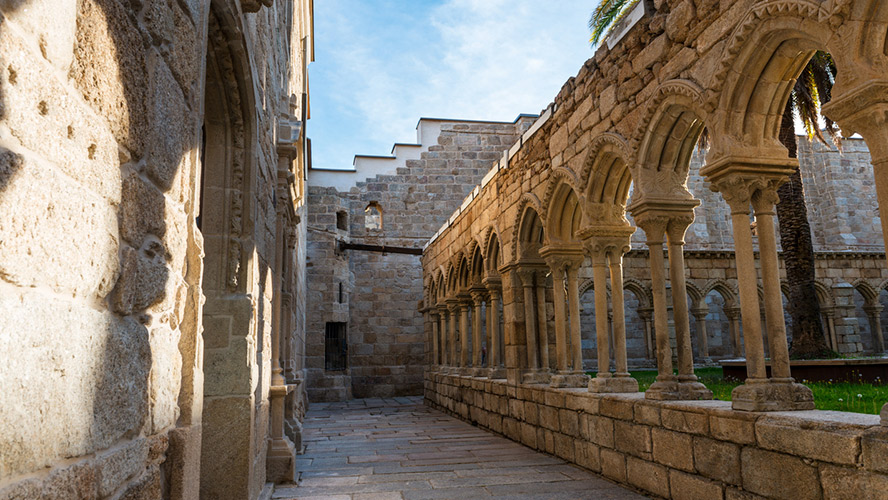
Aquis Querquennis
Located on the banks of the River Limia (at the Las Conchas reservoir in Baños de Bande), this ancient Roman settlement consists of a military camp and a roadside mansion (a travellers’ inn) that were established on the route of the ancient Via XVIII or Via Nova, the road that connected the Roman city of Bracara Augusta (present-day Braga, Portugal) and Asturica Augusta (Astorga). Aquis Querquennis is one of the best preserved and most studied archaeological complexes of the period (2nd and 3rd centuries). It includes a fascinating Interpretation Centre and the remains of various structures, ranging from the headquarters or Principia to the troop barracks (strigia), granaries, hospital, walls, drainage systems, roadside mansion and thermal baths.
NATURAL SPACES
Serra do Xurés
In the south of the Ourense province, beyond the River Limia, this large protected natural area forms, together with the neighbouring Peneda-Gerês National Park, the great Gerês-Xurés Transboundary Biosphere Reserve. Spanning nearly 30,000 hectares (on the Spanish side alone), the Baixa Limia-Serra do Xurés Natural Park is the largest of its kind in Galicia, with lush forests that contrast with the surrounding granite mountains. More than 807 species of flora (17 of which are endemic) and around 150 species of birds and singular animal species (such as the “vaca cachena”, a Galician cow) are intertwined with important historical remains, such as the Roman archaeological site of Aquis Querquennis or the Visigothic church of Santa Comba de Bande, which dates back to the 7th century, among others. This is a privileged space where you can practice all kinds of outdoor activities, from mountain biking along designated trails to hiking along spectacular routes.
Pozas de Melón
The small village of Melón, in the far west Ourense province and just 10 km from Ribadavia, can boast —not without reason— to be home to a unique natural treasure. The course of the River Cerves (a tributary of the Miño on the right bank) has carved out a granite bed on the mountain slopes over many years, giving rise to numerous natural pools of varying sizes, punctuated with a series of small waterfalls and surrounded by forest. The Pozas de Melón [Melón Pools] comprise a great natural spa that is not to be missed. This spectacular setting is crowned by the Tourón waterfall. This natural jewel of the province of Ourense also has a car park and a cafeteria.
Cañón del Sil
Another of Ourense’s great natural features is the steep and sinuous gorge carved by the River Sil in the heart of the Ribeira Sacra. The walls of both banks of the 35-kilometre Cañón del Sil [Sil Canyon] rise strikingly —in some parts up to five hundred metres above the water— creating a truly impressive natural setting. Sailing down the river in a catamaran and soaking up the scenery is an experience in itself. Moreover, the contrast between the almost vertical slopes and the vine-laden terraces perched atop them paints a memorable picture. We also recommend visiting the wineries of the Ribeira Sacra D.O. and the ancient monasteries in the area.
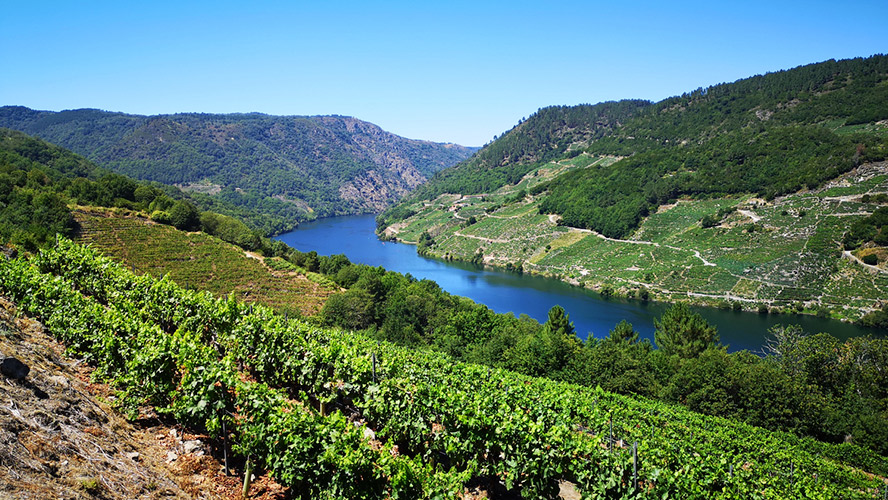
Los Balcones de Madrid
Close to the Cañón del Sil, the Ribeira Sacra viewpoint network (with more than 30 between the banks of the Sil and Miño) is another of the main local attractions. The viewpoint known as “Los Balcones de Madrid” [the Balconies of Madrid] is unquestionably one of the most spectacular ones. They are called as such because this is the place where those who left Ourense in search of a better future, more often than not in the Spanish capital, were bid farewell during the time of the mass emigrations. This viewpoint is notable for the extraordinary panoramic view of the canyon itself. Of course, the various hiking trails that connect these viewpoints and the natural and environmental characteristics of the area only add to the long list of reasons to visit this extraordinary location.
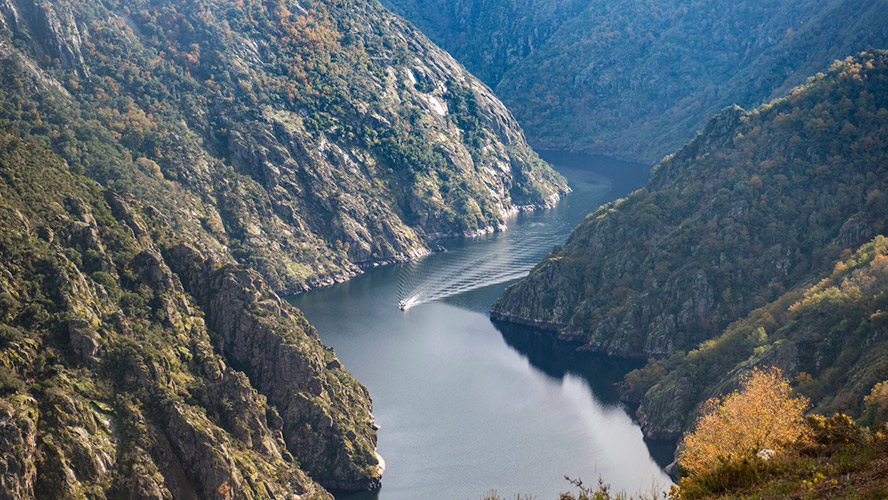
Pasarelas del Mao
The River Mao, a tributary of the Sil on the left bank, is less famous than the other two great rivers of the Ribeira Sacra, the Sil and the Miño. However, it is by no means less spectacular. Visitors are able to walk along the Pasarelas del Mao [River Mao Walkways] to follow the course of the wonderful river that flows below, spanning from the old Fábrica de Luz (an old power station converted into a hostel and hiking centre) to the point at which it meets the River Sil, crossing the spectacular canyon carved out by water. In just more than one kilometre, the Pasarelas del Mao allow you to appreciate the wonderful landscape, flora, fauna, fascinating rock formations and the quiet babbling of the water below. Furthermore, information panels provide in-depth information about the natural wealth of this wonderful part of the province of Ourense.
Where to stay in the Ourense province
If you’re looking for top-class accommodation, we recommend staying in the Barceló Ourense hotel (https://www.barcelo.com/es-es/barcelo-ourense/): a beautiful four-star hotel of the Barceló Group, located right in the city centre. It offers spacious and fully-equipped rooms, a gym and a sauna, all of which are free to use for all guests at the hotel. It also boasts a fabulous gastronomic offer, helping to guarantee an outstanding stay. It is the perfect base for exploring Ourense and its wider province.




































































